This is a preprint.
Engineering precision zebrafish alleles of human disease
- PMID: 40475461
- PMCID: PMC12139734
- DOI: 10.1101/2025.05.18.654701
Engineering precision zebrafish alleles of human disease
Abstract
Animal models of human diseases are an essential component of understanding disease pathogenesis and serve as preclinical models for therapeutic evaluation. Recently human patient genome sequencing has defined unique patient variants that result in disease states with different phenotypes than those observed with null alleles. The UAB Center for Precision Animal Modeling (CPAM) serves to analyze patient variant pathogenicity and disease mechanisms through the generation of animal models. We have optimized a zebrafish gene editing platform to successfully generate 11 patient variants (first round: NF1 R1276Q, NF1 G484R, VMA21 G55V, SPOP D144N, SGO1 K23E, Pex10 H310D, and FKRP C318Y; second round: NF1 R681*, NF1 M992del, P53 R175H, and PKD2 L656W) and 1 research allele (p53 K120R). We used CRISPR/Cas9 guide directed cleavage along with single-stranded oligodeoxynucleotide (ssODNs) repair templates to generate these models. We evaluated multiple oligo orientations and sizes, but did not find a unified consensus orientation or size that significantly impacted efficiency, emphasizing the need to empirically evaluate multiple variations for the best homology directed repair (HDR) rate. We determined PCR amplicon Next Generation Sequencing (NGS) evaluation of HDR efficiency at the F0 embryo level is best for determining the ideal guide and oligo combination. Further NGS evaluation of DNA from progeny from F0s (germline derived), not F0 biopsy DNA, is essential to identify germline transmitting founders. Surprisingly we find that most founders exhibit a jackpot effect in the germ line but not in the somatic tissue. We found NGS superior to using ICE (Inference of CRISPR Edits) for determining HDR frequency. When applicable, allelic-specific PCR or allelic specific restriction digestion can be used to genotype mutation carrying F1 generation animals, however we demonstrated that false positives occur. Further, we successfully used high resolution melting curve analysis (HRMA) to differentiate and identify F1 animals with patient variants.
Keywords: CRIPSR/Cas9; Genome Editing; Inference of CRISPR Edits (ICE); Oligo directed homology directed repair (HDR); Precision animal models; Zebrafish; high-resolution melting curve analysis (HRMA).
Conflict of interest statement
DECLARATION OF INTERESTS: “The authors declare no competing interests.”
Figures
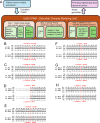
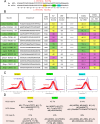
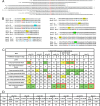
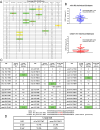
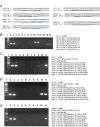
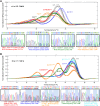
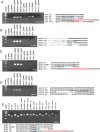
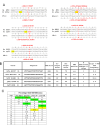
References
Publication types
Grants and funding
LinkOut - more resources
Full Text Sources
Research Materials
Miscellaneous
